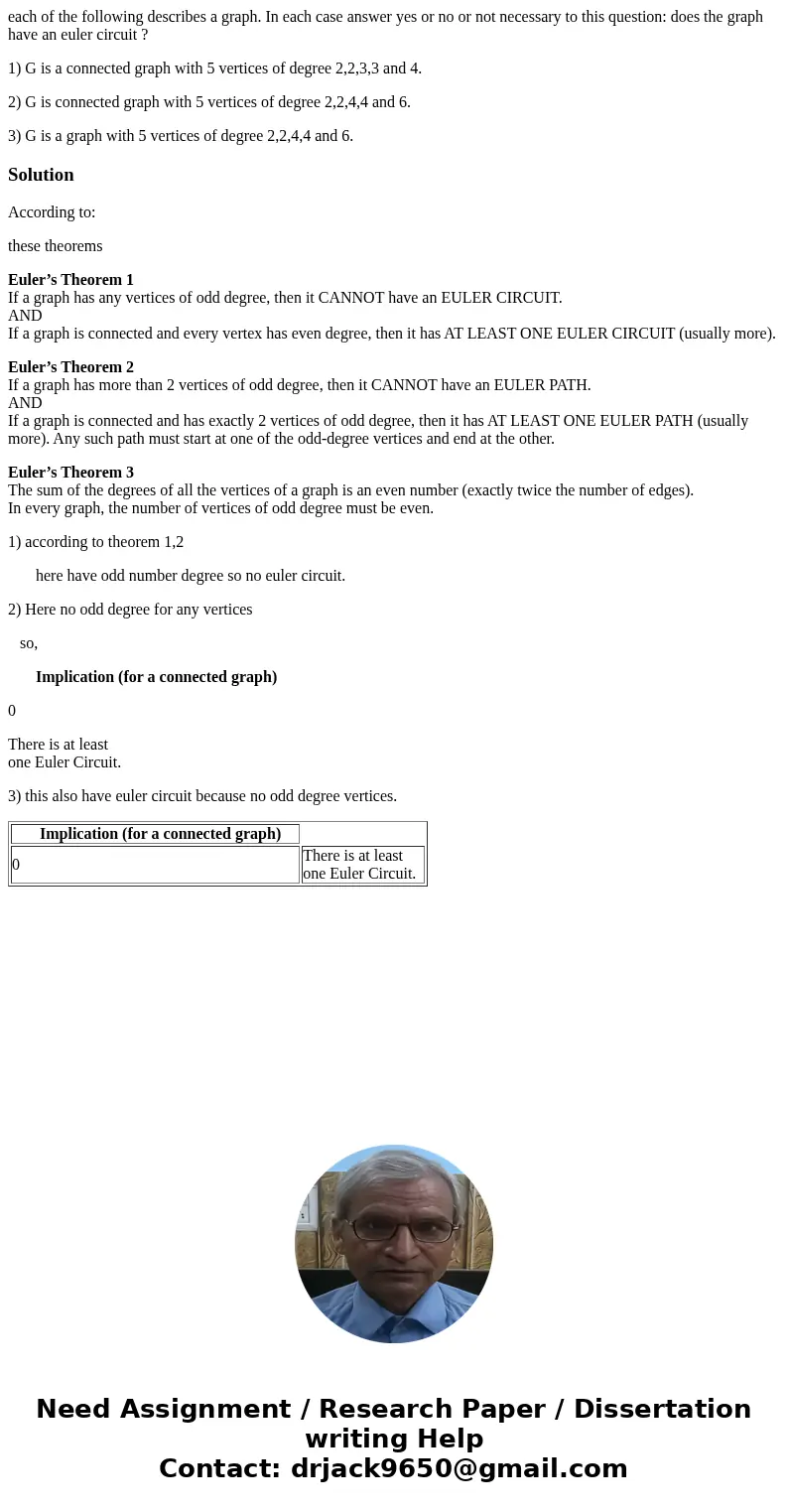each of the following describes a graph In each case answer
each of the following describes a graph. In each case answer yes or no or not necessary to this question: does the graph have an euler circuit ?
1) G is a connected graph with 5 vertices of degree 2,2,3,3 and 4.
2) G is connected graph with 5 vertices of degree 2,2,4,4 and 6.
3) G is a graph with 5 vertices of degree 2,2,4,4 and 6.
Solution
According to:
these theorems
Euler’s Theorem 1
If a graph has any vertices of odd degree, then it CANNOT have an EULER CIRCUIT.
AND
If a graph is connected and every vertex has even degree, then it has AT LEAST ONE EULER CIRCUIT (usually more).
Euler’s Theorem 2
If a graph has more than 2 vertices of odd degree, then it CANNOT have an EULER PATH.
AND
If a graph is connected and has exactly 2 vertices of odd degree, then it has AT LEAST ONE EULER PATH (usually more). Any such path must start at one of the odd-degree vertices and end at the other.
Euler’s Theorem 3
The sum of the degrees of all the vertices of a graph is an even number (exactly twice the number of edges).
In every graph, the number of vertices of odd degree must be even.
1) according to theorem 1,2
here have odd number degree so no euler circuit.
2) Here no odd degree for any vertices
so,
Implication (for a connected graph)
0
There is at least
one Euler Circuit.
3) this also have euler circuit because no odd degree vertices.
| Implication (for a connected graph) | |
| 0 | There is at least |

 Homework Sourse
Homework Sourse